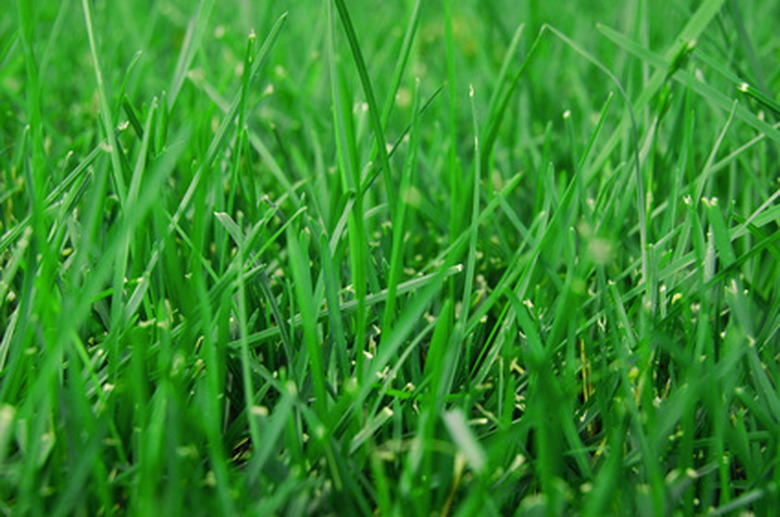How To Make Your Own Grass Plugs
Grass plugs are used as a way to fill in bare areas of the yard, or help grow an new type of grass that will eventually take over the lawn. Home owners can grow grass plugs in their own yards, which gives the grass the opportunity to adjust to the climate, giving the new growth a better chance to thrive.
Step 1
Sprinkle an inch or so of soil in the bottom of a potting flat that is divided into cells.
Step 2
Drop seeds into each cell. Make sure to drop enough in each block so that the seeds are evenly spread out over the dirt. About 16 seeds per inch should do it.
Step 3
Cover the seeds with a quarter-inch of dirt and water the cell until it's damp. Put the flats in a sunny area, and wait until the grass is grown, keeping it watered.
- Grass plugs are used as a way to fill in bare areas of the yard, or help grow an new type of grass that will eventually take over the lawn.
- Sprinkle an inch or so of soil in the bottom of a potting flat that is divided into cells.
Step 4
Use the grass to plug the yard. Dig small holes with a spade deep and wide enough for each square cell, or plug, to fit in. Water the yard after the plugs are placed.
Grass Plugs Work?
Grass plugs work well when you plant them in the season in which they grow the fastest. Because of their slow growing habit, warm-season grasses are often established with sod or plugs because seeding often fails from wind and water erosion. If you choose warm-season grass plugs, plant them in late spring to early summer. Like any seedling, grass plugs need well-draining soil to spread their sensitive roots. Improperly prepared soil causes plugs to fail. Once established, your plugs still need level ground to prevent any puddling — standing water on a lawn creates a haven for diseases and other problems. Stagger the holes and dig them 12 to 18 inches apart. Spacing them more closely will establish the lawn more quickly, but you'll need more plugs. Water them each day for the first one to two weeks. At this point, the grass plants should be established. Slowly reduce watering frequency to encourage deep root growth.
- Use the grass to plug the yard.
- Once established, your plugs still need level ground to prevent any puddling — standing water on a lawn creates a haven for diseases and other problems.
Things Needed
- Growing flats divided into cells
- Potting soil
- Water
- Grass seed
- Spade
